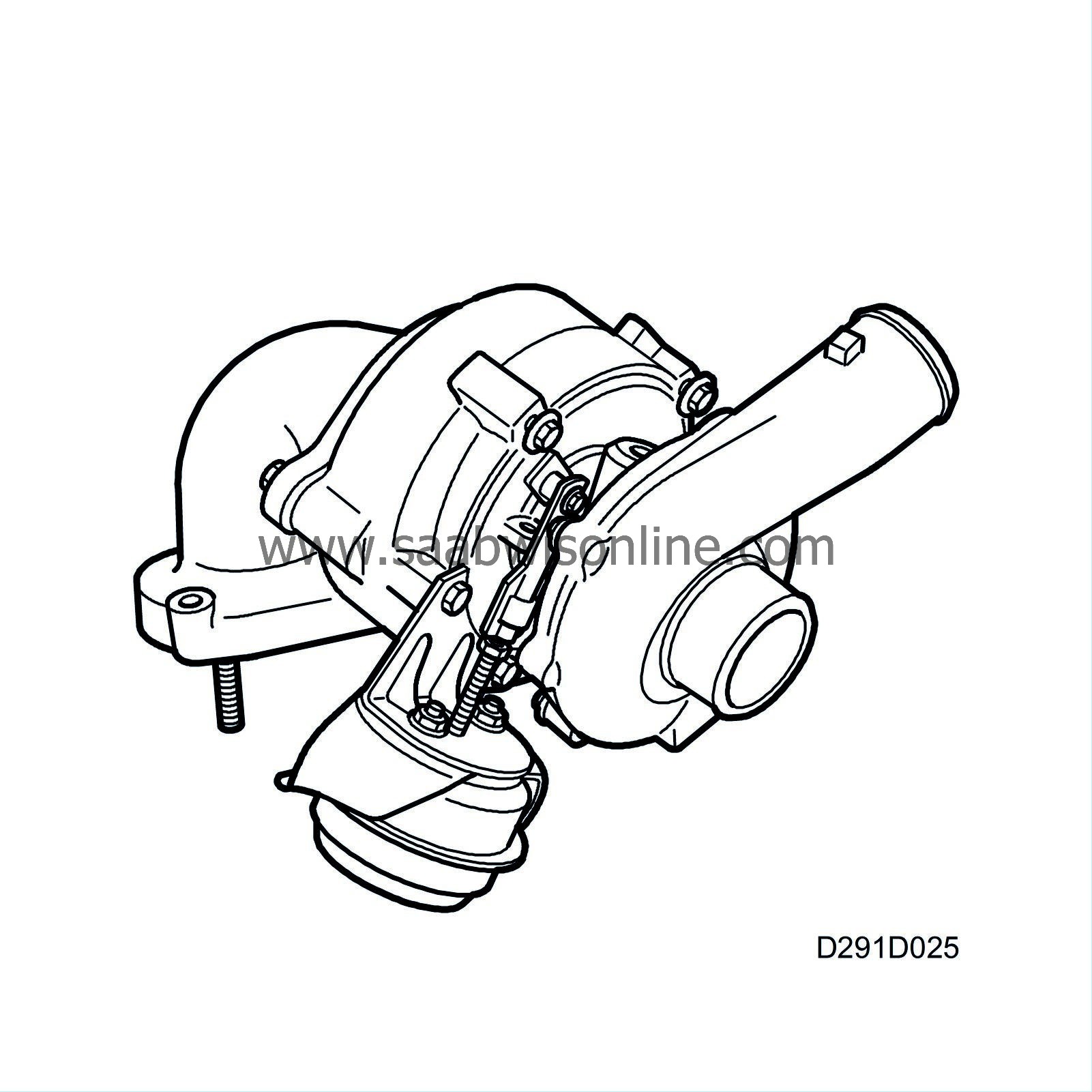Turbo pressure regulation, 4-cyl
|
|
Turbo pressure regulation, 4-cyl
|
The engine is equipped with a Garret 15 VNT turbocharger (Variable Nozzle Turbine) and does not have a wastegate valve. Instead, it is governed by a set of vanes on the exhaust side of the turbocharger.
.

These vanes control the speed and boost pressure of the turbocharger. At low exhaust flow, the vanes will be adjusted to increase the speed of the turbocharger and thereby increase the boost pressure. This means that a higher engine torque can be attained even at low engine speeds. As the exhaust flow increases, the turbocharger speed will be reduced to avoid overspeeding but it will still deliver the requested boost pressure.
The turbo pressure depends on the engine speed and the load is monitored continuously by a pressure sensor mounted in the intake manifold. The vacuum unit that governs the vanes is larger than on earlier turbo designs. The vacuum pump has a larger connection than previously in order to ensure that the vacuum unit receives sufficient vacuum.
|
•
|
The engine develops a high torque even at low engine speeds.
|
|
•
|
As the working temperature of the turbocharger can be kept down, the compression of the air to the cylinders is improved, which increases power.
|
|
•
|
The turbocharger responds more quickly to the desired torque which means improved drivability.
|
|
•
|
The engine consumes less fuel and has reduced emissions.
|




